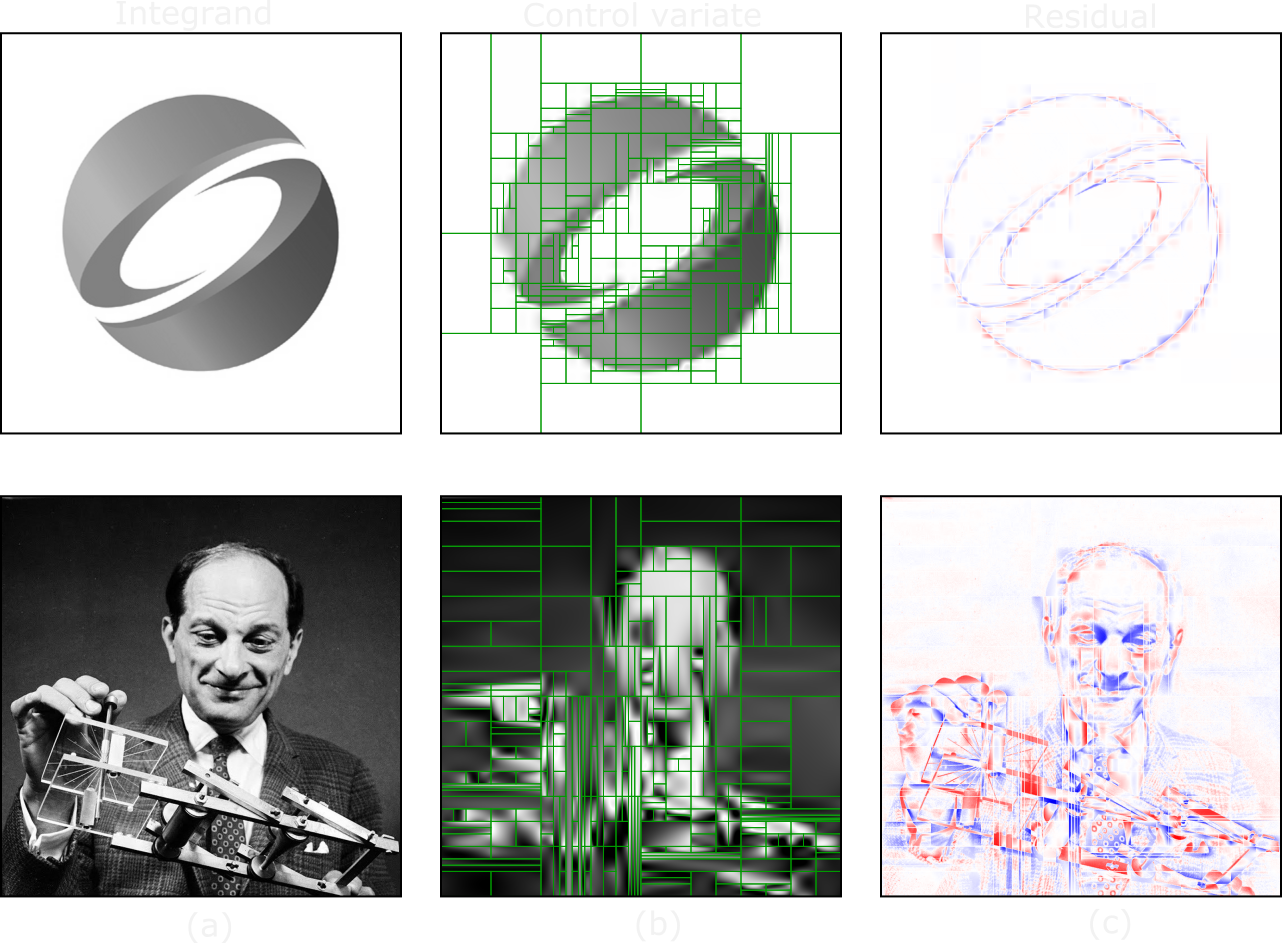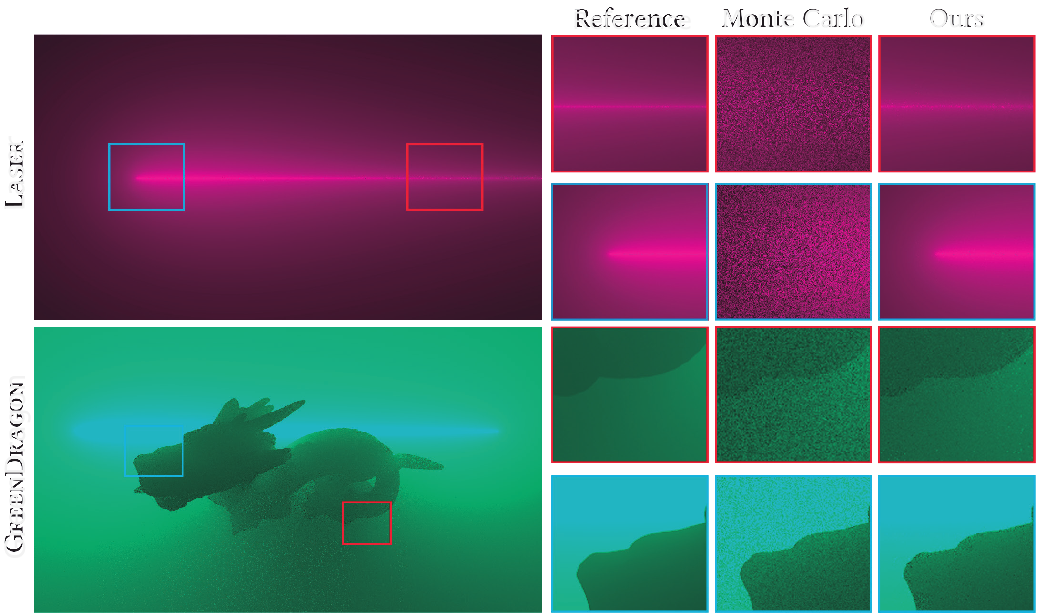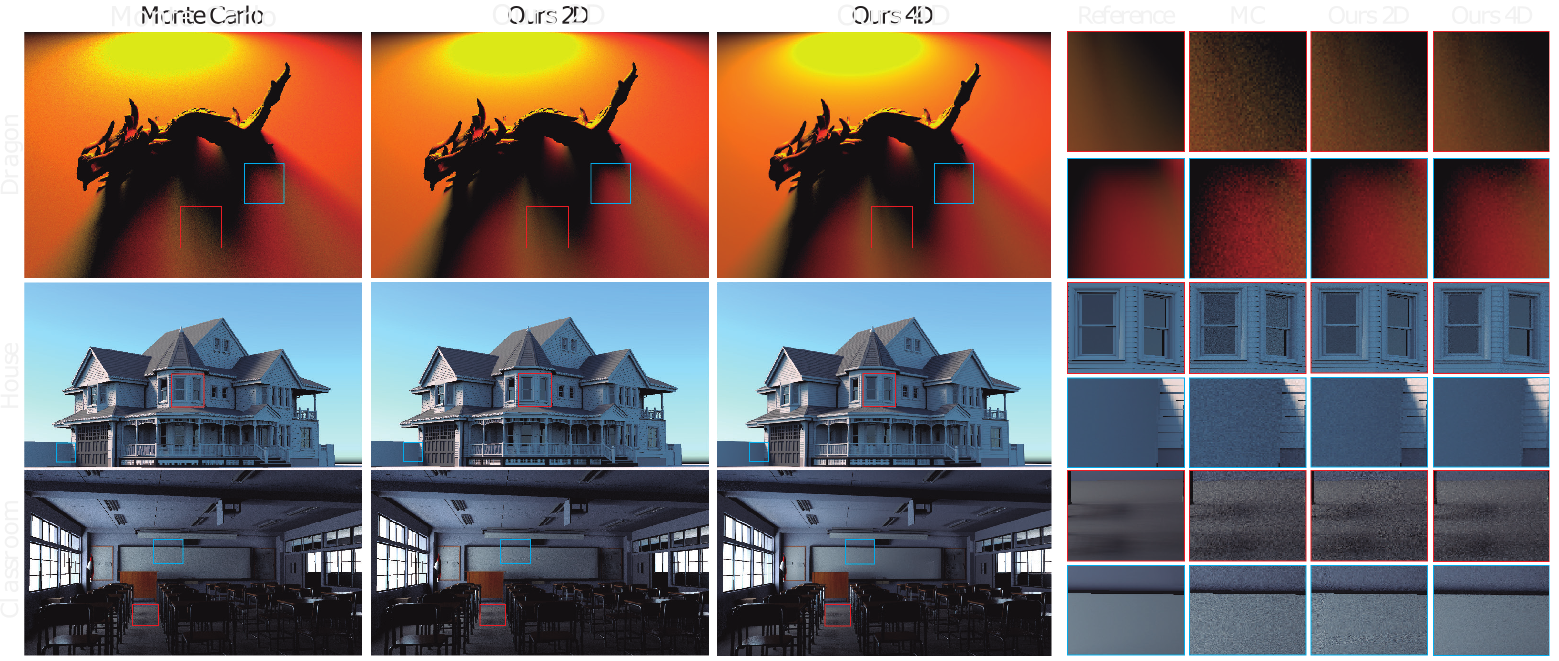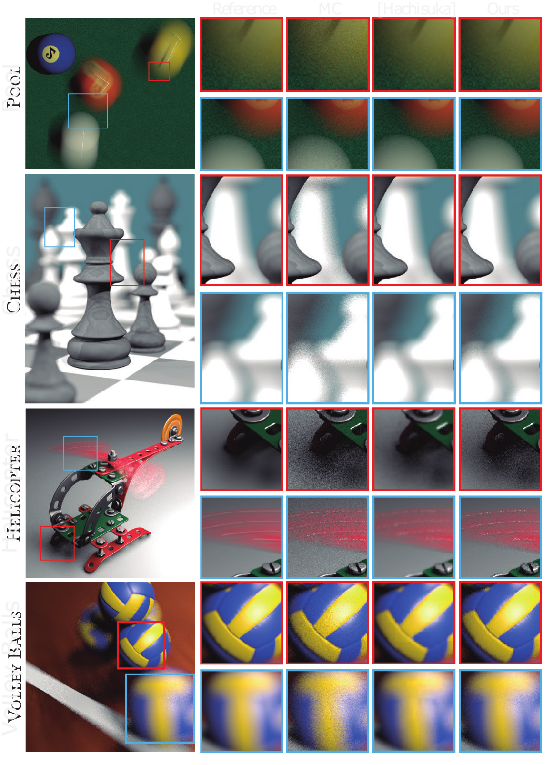
Bistro: Unbiased rendering of a complex scene with global illumination (22 indirect bounces, resulting in a 48-dimensional integration domain). Traditional Monte Carlo-based rendering results in high variance even with importance sampling techniques. In contrast, our technique combines multiple importance sampling with an adaptive piecewise-polynomial control variate (4D in this example): Our control variate closely approximates the low-frequency regions of the signal, while leaving the high-frequency details on the residual, which is estimated using Monte Carlo integration. This results in lower variance with faster convergence. Except for the reference, the images were generated using 512 samples per pixel.
Abstract
We present an unbiased numerical integration algorithm that handles both low-frequency regions and high-frequency details of multidimensional integrals. It combines quadrature and Monte Carlo integration, by using a quadrature-base approximation as a control variate of the signal. We adaptively build the control variate constructed as a piecewise polynomial, which can be analytically integrated, and accurately reconstructs the low-frequency regions of the integrand. We then recover the high-frequency details missed by the control variate by using Monte Carlo integration of the residual. Our work leverages importance sampling techniques by working in primary space, allowing the combination of multiple mappings; this enables multiple importance sampling in quadrature-based integration.
Our algorithm is generic, and can be applied to any complex multidimensional integral. We demonstrate its effectiveness with four applications with low dimensionality: transmittance estimation in heterogeneous participating media, low-order scattering in homogeneous media, direct illumination computation, and rendering of distributed effects. Finally, we show how our technique is extensible to integrands of higher dimensionality, by computing the control variate on Monte Carlo estimates of the high-dimensional signal, and accounting for such additional dimensionality on the residual as well. In all cases, we show accurate results and faster convergence compared to previous approaches.
Video
Figures
Bibtex
@article{crespo21primary,
title = {Primary-Space Adaptive Control Variates using Piecewise-Polynomial Approximations.},
year = {2021},
journal = {ACM Transactions on Graphics},
author = {Crespo, Miguel and Jarabo, Adrian and Mu\~{n}oz, Adolfo},
volume = {40},
number = {3},
issn = {0730-0301},
url = {https://doi.org/10.1145/3450627},
doi = {10.1145/3450627},
issue_date = {July 2021},
month = jul,
articleno = {25},
numpages = {15},
}
Acknowledgements
We thank Ibón Guillén for comments and discussion throughout the project; Manuel Lagunas for help with figures; Diego Gutierrez for advice on the reviews; Felix Bernal for helping with the Single Scattering implementation; all the members of the Graphics & Imaging Lab that helped with proof-reading; and the reviewers for the in-depth reviews. The Pool and Chess are by Hachisuka et al.; Cornell Box, House, Classroom and MIS Test are by Benedikt Bitterli; Violin was modeled by Tahseen; Helicopter was modeled by Mond; Volley Balls models by Shri; Dragon and Budha are from the Stanford 3D Scanning Repository; Bistro was modelled by Amazon Lumberyard. Lightfields used in Figure 4 are courtesy of Jarabo et al. [2014]. This project has been funded by the European Research Council (ERC) under the EU's Horizon 2020 research and innovation programme (project CHAMELEON, grant No 682080), DARPA (project REVEAL, HR0011-16-C-0025) and the Spanish Ministry of Economy and Competitiveness (project TIN2016-78753-P and PID2019-105004GB-I00).







